Worried about your baby’s gagging, also known as a gag reflex in babies? It’s completely normal and actually a protective mechanism that helps prevent choking. Gagging is especially common as babies start eating solid foods and is an important part of their development. In this article, I’ll help you understand why the gag reflex happens, what it means for your baby, and how you can manage it with confidence.
Key Takeaways
The gag reflex is a vital protective mechanism that helps them learn to eat safely. It starts around six months and gradually develops as they try solid foods.
Differentiating between gagging and choking is crucial; understanding the signs can help parents respond effectively and calmly during eating episodes.
Promoting safe eating habits is key to reducing gagging and preventing choking. This includes supervision and cutting food into small pieces. When introducing solids, ensure food is appropriately sized to prevent choking hazards. Consider your baby’s developmental readiness for solid foods.
Table of Contents
- Key Takeaways
- What Is Gag Reflex in Babies?
- Why Do Babies Gag When Eating Solids?
- How to Differentiate Between Gagging and Choking
- How to Respond to Baby Gagging
- Tips for Reducing Gag Reflex in Babies at Mealtime
- The Role of Baby-Led Weaning in Gagging
- Common Choking Hazards for Babies
- Steps to Take If Your Baby Is Choking
- When to Seek Medical Advice
- Infant CPR & First Aid Training
- Summary
- Frequently Asked Questions About Gag Reflex
What Is Gag Reflex in Babies?
The gag reflex is an important safety feature that helps protect them from choking. It kicks in when something touches the back of their throat, causing them to push it forward to keep their airway clear. In babies, this reflex is extra sensitive and starts from the middle of their tongue—much earlier than in adults.
In the first few months, babies’ gag reflex is strong, helping them safely manage new foods. As they grow, the reflex moves back in their mouth, allowing them to handle different food textures.
It’s totally normal for babies between 6-10 months to gag more frequently as they develop these skills. I know, it can be alarming to watch, but keep in mind that it’s a sign that your baby is learning how to safely eat solid foods. Understanding the gag reflex in babies will help you feel more confident as you support them through this important milestone.
Just remember—never put your fingers in their mouth when they gag, as it can accidentally push food further back and make choking more likely.
Why Do Babies Gag When Eating Solids?
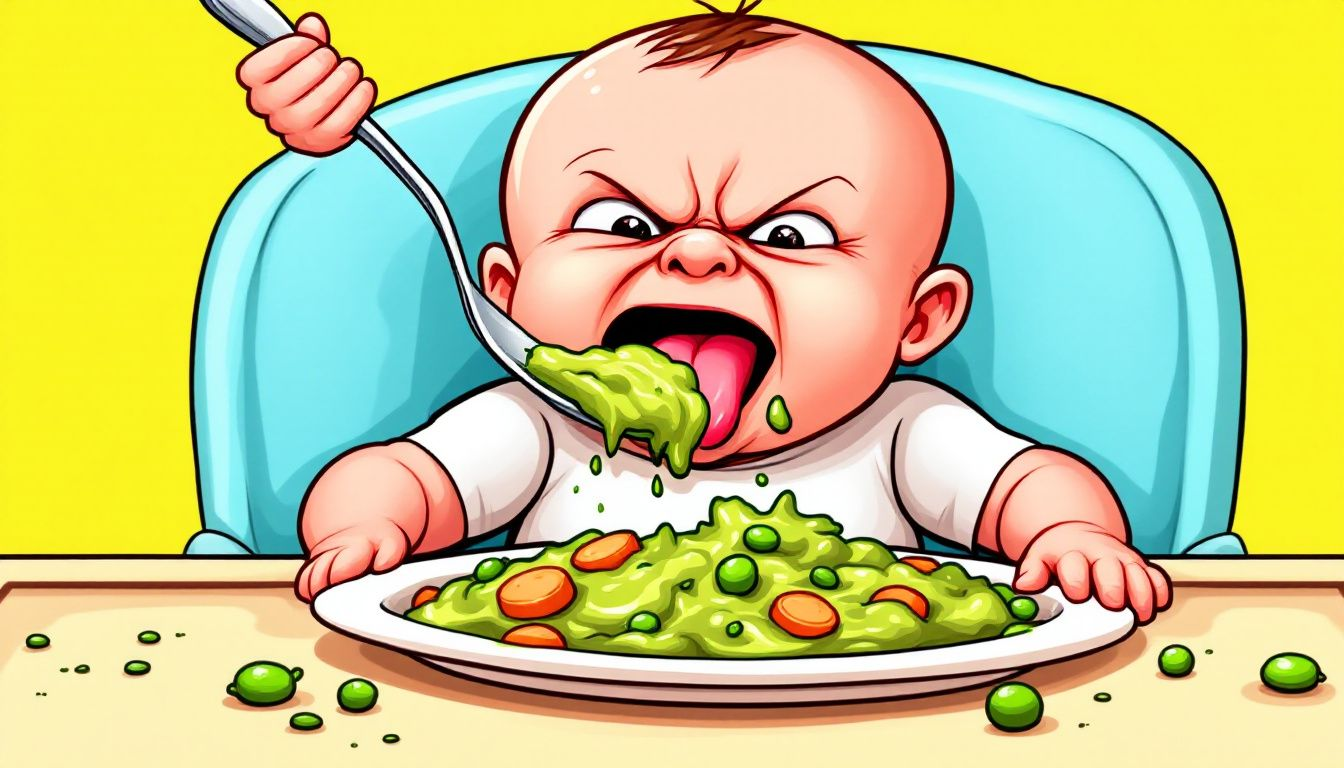
When babies start eating solid foods, it’s normal for them to gag. This is a natural reflex that usually fades around six months old, which is also when many parents begin offering solids. Gagging is a part of the transition from only drinking breast milk or formula to trying new and different food textures.
At first, it’s common for babies to gag often, especially when they try different textures, like smooth purees or chunkier finger foods. This happens because their mouths are still learning how to handle food. Gagging helps babies understand where the food is in their mouths and teaches them how to move it properly for swallowing.
As babies gradually try more types of food, the gag reflex tends to happen less. Offering a variety of textures helps babies get better at chewing and swallowing. It’s important to remember that each baby is different. Some may gag more or less than others because every baby develops at their own pace and has different reactions to new food experiences.
How to Differentiate Between Gagging and Choking
It’s really important for anyone looking after a baby to understand the difference between gagging and choking.
Gagging is a normal reflex that helps push food forward in the mouth, preventing it from going too far down the throat. It’s part of a baby’s development. On the other hand, choking happens when something blocks the baby’s airway, and it’s a serious emergency that can be life-threatening.
You can tell if a baby is gagging or choking by their reactions. When a baby is gagging, they might cough, look like they’re about to vomit, or turn red in the face, sometimes with tears. These are signs that their body is trying to move the food to a safer position. But if a baby is choking, things look much more serious. The baby may go silent, their lips might turn blue, and they could have trouble breathing or even stop breathing altogether. You won’t hear any crying, which is a big red flag.
Knowing how to tell the difference between these situations is crucial. When a baby is gagging, it’s usually not dangerous, and you can stay calm to help them manage it. But if the baby is choking, you must act quickly. Every second matters to clear the airway and get oxygen flowing again. I think the key here is staying calm, but being prepared to act fast when it counts.
How to Respond to Baby Gagging

When your baby starts to gag, it’s really important to stay calm. Your calmness will help your baby feel less scared and allow them to handle the gagging on their own. Don’t try to rush in and fix it, as this could make things worse.
Gagging is actually a key part of your baby’s growth. It helps them develop the muscles in their mouth and throat that are needed for eating safely. It also teaches them how to chew properly. While it might be a little scary to see your baby gag, it’s just a normal part of learning how to eat.
After a gagging episode, try offering your baby some water from a straw cup. This can help clear any leftover food and soothe their throat. Remember, gagging is a natural way for babies to learn how to eat safely. Trust that they’re learning, and be there to support them as they grow.
Tips for Reducing Gag Reflex in Babies at Mealtime
Gagging is pretty common when babies first start eating solids. If your baby is gagging often, don’t worry—there are some things you can try to help make mealtime easier and more enjoyable for both of you.
- Check the food temperature: Make sure the food isn’t too hot or too cold. Extreme temperatures can trigger gagging, so aim for a comfortable, warm (but not too hot) temperature.
- Adjust the food texture: If the food is too thick or too runny, it might be hard for your baby to swallow. Try different textures to see what your baby handles best.
- Offer smaller portions: If your baby is gagging on large amounts of food, try giving smaller bites. This can help them get used to new textures and flavors without feeling overwhelmed.
- Experiment with feeding positions: Some babies gag more when sitting up, while others might gag more when lying down. Try different positions to see what works best for your baby.
- Watch for allergies or intolerances: Frequent gagging could be a sign that your baby has an allergy or intolerance to a certain food. If you think this might be the case, it’s a good idea to talk to your pediatrician.
By understanding and normalizing the gag reflex, you can approach mealtimes with confidence and support your baby as they learn and grow. Remember, each gag is a step towards mastering the art of eating, and with time and practice, your baby will become more adept at handling solid foods.
The Role of Baby-Led Weaning in Gagging
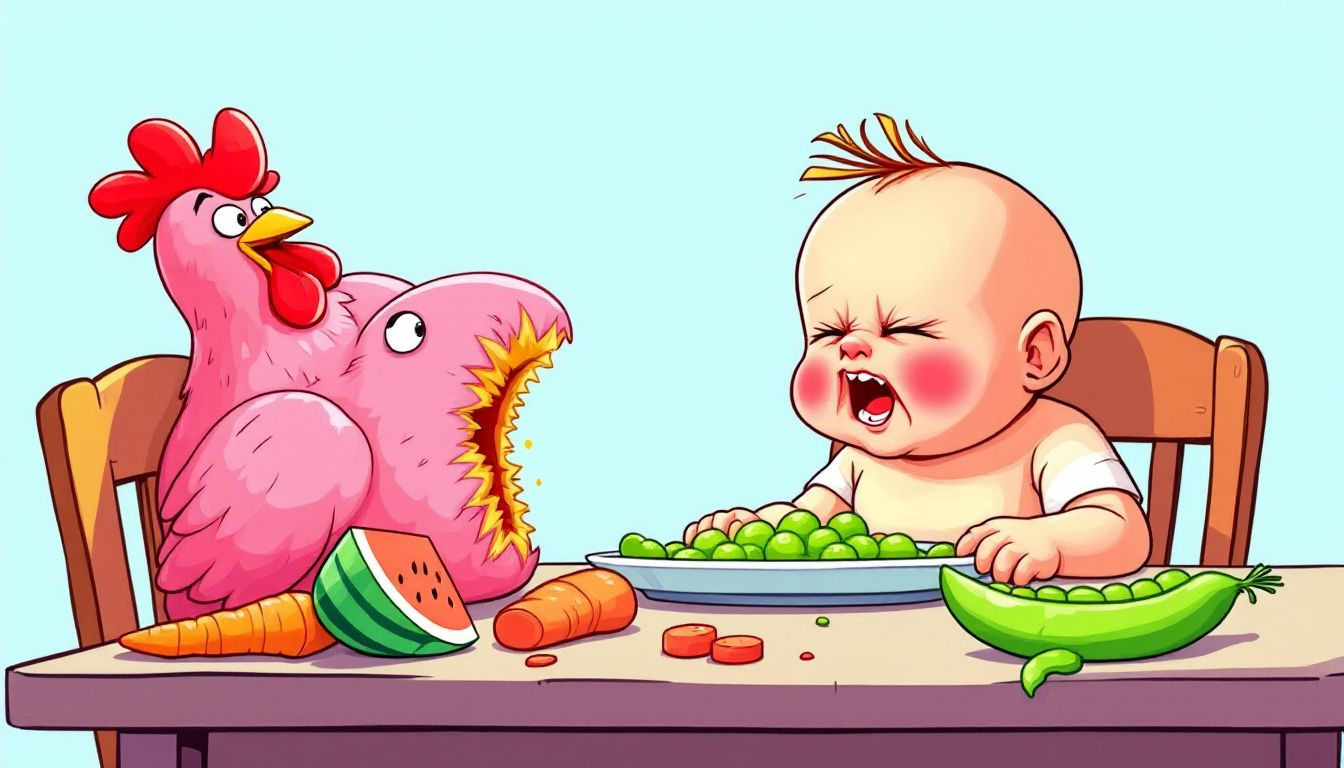
When your baby starts transitioning to solid foods, baby-led weaning is a great way to teach them how to manage food and reduce gagging over time. This method encourages babies to feed themselves, which helps them develop essential skills, like chewing, and activates their gag reflex around six months. If you’re interested in learning more about baby-led weaning, I have a detailed article explaining its benefits and how to get started here.
As your baby practices eating various foods, their chewing skills improve, and they rely less on their gag reflex during meals. This process helps build important oral skills and boosts their confidence as they get more comfortable with new, safe foods.
Baby-led weaning allows your baby to take charge of their eating journey. This method not only helps reduce gagging, but also encourages independence and healthier feeding habits. If you’re not sure about trying the baby-led weaning method, that’s okay! You can still offer mouth-friendly toys for play, which can help reduce gagging sensitivity and make mealtime more enjoyable.
Just remember, every baby is different, so be mindful of how your little one reacts to gagging or choking, and stay attentive to their individual needs.
Common Choking Hazards for Babies

Being aware of common choking hazards, especially the risk of baby choking, can help parents prevent dangerous situations. Foods like whole nuts, grapes, cherry tomatoes, and hard vegetables pose significant choking risk if not properly modified. Peanuts and unmodified peanut butter are particularly dangerous due to their sticky and hard-to-swallow nature.
To reduce the risk, always cut foods into small, manageable pieces. For instance, grapes and cherry tomatoes should be halved or quartered, and hard vegetables should be cooked until soft foods. Small, sticky, or hard foods are difficult for babies to chew and swallow, making them more prone to choking.
Cutting foods into safe sizes and staying alert during mealtime can really help reduce the risk of choking. I remember feeling nervous when my baby first started eating solids, but with the right precautions and staying alert, I felt much more confident as she explored new foods safely.
Steps to Take If Your Baby Is Choking
When your baby is choking, every second counts, and it’s important to act fast. First, stay calm and quickly place your baby face down along your forearm. Keep their head lower than their chest, using your thigh for extra support. This position uses gravity to help dislodge the object blocking their airway.
Next, give five firm back blows between their shoulder blades with the heel of one hand. If this doesn’t clear the blockage, carefully turn your baby over so they are facing up. Place two fingers in the center of their chest and deliver five chest thrusts. Keep alternating between back blows and chest thrusts until either the object is cleared, or your baby starts to cough or cry.
If at any point your baby becomes unresponsive, immediately lay them flat on a firm surface and begin CPR. This includes giving rescue breaths and chest compressions. If the choking continues and you can’t dislodge the object, call emergency services right away. Don’t waste time—stay calm, act quickly, and get professional help if needed. If you’re interested in online CPR training, visit MyCPRNow for their Online CPR Certification
It’s important to remember that these techniques are meant to be used in emergency situations. That’s why it’s so helpful to have learned CPR and first aid beforehand so you can confidently act in these critical moments. Having a plan and staying calm can truly make all the difference when seconds matter.
When to Seek Medical Advice
It’s completely normal for babies to gag as they grow and learn how to eat, but there are times when you should reach out to a doctor. If your baby keeps vomiting or shows a strong dislike for eating, which leads to poor weight gain, it’s a good idea to talk to a pediatrician.
If you notice signs of dehydration—like your baby going more than eight hours without a wet diaper—or if they’re vomiting for more than 12 hours, you should seek medical help right away. Vomiting with severe stomach pain or cramping is a serious red flag that needs immediate attention.
If you’re still worried about your baby’s ability to handle new foods, or you’re unsure if they’re ready for different textures, it might be helpful to speak with a feeding specialist. They can work with you to create a personalized plan that fits your baby’s needs and gives you both the support you need. Remember, you’re not alone—getting the right help can make a big difference in your baby’s eating journey.
Infant CPR & First Aid Training
Ensuring you are equipped to handle emergencies is crucial for parents, especially when faced with incidents of gagging and choking. Participating in first aid courses that include infant CPR can provide the critical skills required to respond effectively if a child chokes. These trainings cover vital lifesaving methods, like performing chest compressions and delivering rescue breaths during such crises.
Staying current on safety protocols by regularly revisiting these training courses enables you to react quickly and with assurance should an emergency arise. This preparedness greatly diminishes the dangers associated with introducing your baby to various new foods, making it safer for them as they discover different textures and tastes.
Summary
Understanding your baby’s gag reflex and knowing how to respond appropriately can make a significant difference in their eating experience. From recognizing the difference between gagging and choking to promoting safe eating habits and being prepared with first aid skills, every step is crucial in ensuring your baby’s safety.
As parents, witnessing gagging can be stressful, but with the right knowledge and preparation, you can navigate these moments with confidence. Embrace this learning journey with your baby, knowing that each gag is a step towards mastering the art of eating. Stay informed, stay prepared, and most importantly, stay calm – your baby is learning and growing with each bite.
Frequently Asked Questions About Gag Reflex
What is a baby’s gag reflex?
A baby’s gag reflex is an amazing protective mechanism that ensures they don’t choke by pushing unwanted food out of their mouth! It’s all about keeping your little one safe while they explore new tastes!
How can I tell if my baby is gagging or choking?
You can tell that your baby is gagging if they are making noise and coughing, while choking will be silent with signs like blue lips or difficulty breathing. It’s crucial to distinguish between the two for your baby’s safety!
What should I do if my baby starts choking?
If your baby starts choking, quickly give five back blows followed by five chest thrusts! It’s crucial to act fast and don’t hesitate to call for emergency help if you need it!
Are there foods I should avoid giving my baby to prevent choking?
Absolutely! Stay clear of whole nuts, grapes, cherry tomatoes, and hard vegetables unless they’re cut up safely. Keeping your little one safe is the priority!
When should I seek medical advice for my baby’s gagging or vomiting?
You should definitely seek medical advice if your baby is gagging frequently, vomiting for more than 12 hours, or showing signs of dehydration, like having no wet diapers for eight hours. It’s better to be safe and ensure your little one gets the care they need!
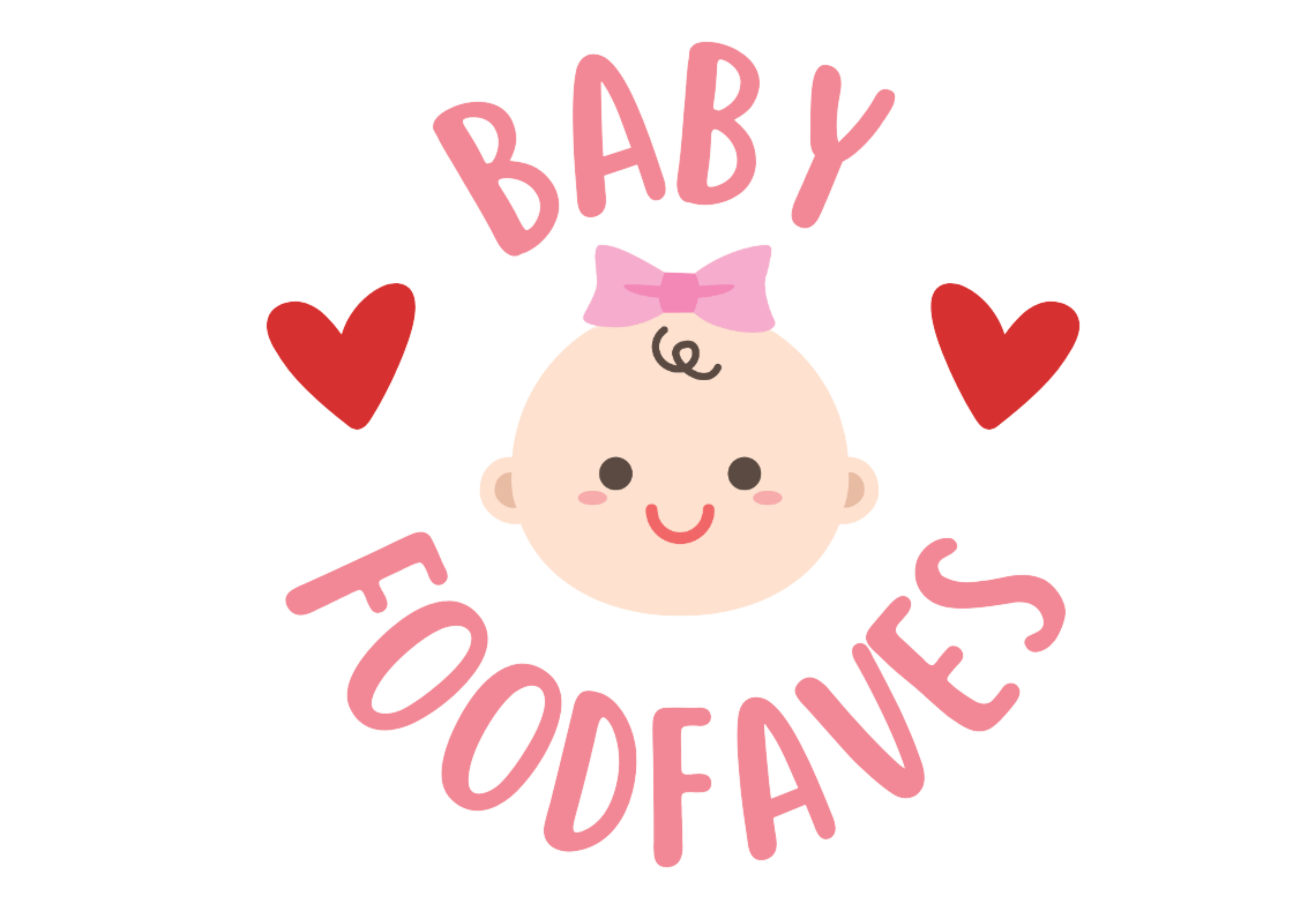


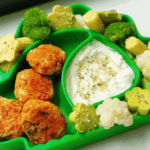


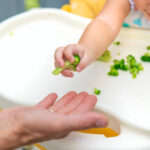






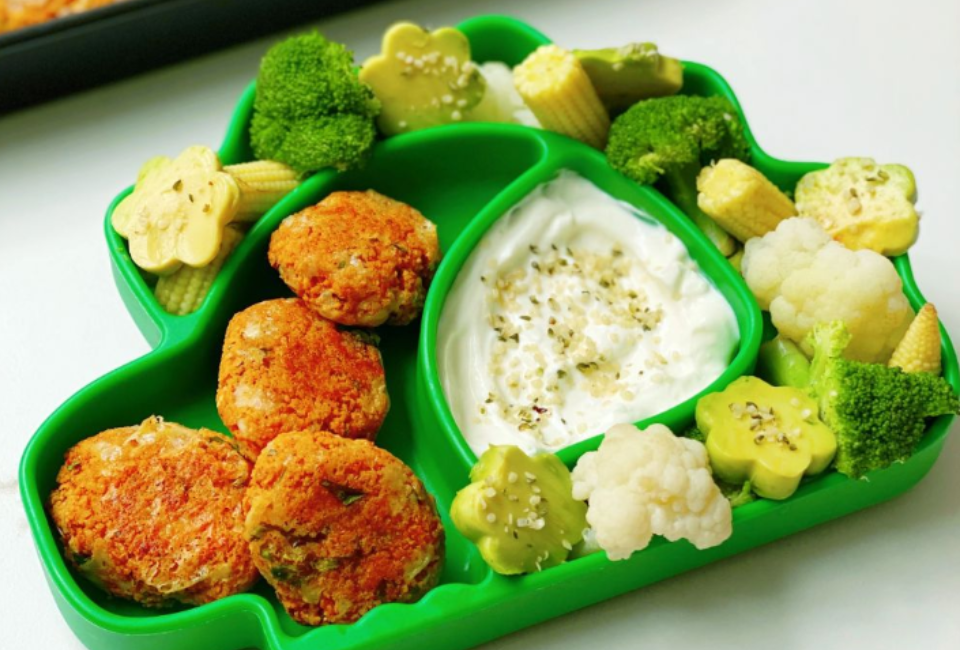


Leave a Reply